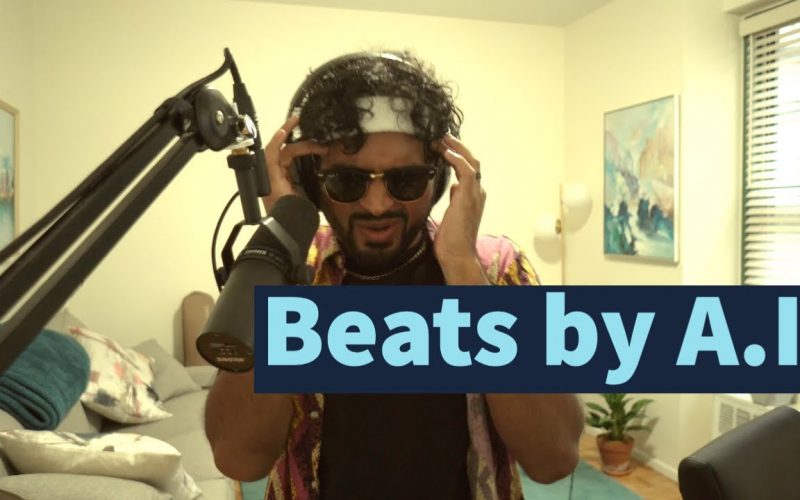Author:
The next time you hear a popular song on the radio, listen to the beat behind the lyrics. Usually, a high-powered production team came up with it—but in the future, that beat could be created with help from artificial intelligence. That’s what Googler MJ Jacob predicts, as he combines his job as an engineer with his love for writing and performing rap music.
Usually based in Google’s offices in New York City, MJ is working from his Manhattan apartment these days as a customer engineer for Google Cloud, helping companies figure out how to use machine learning and AI to accomplish their business goals. But in his free time, he’s writing lyrics, producing hip-hop tracks and creating YouTube videos detailing how he does it all.
MJ has balanced an interest in technology with a love for hip-hop since he was a 13-year-old living in Virginia. His family was struggling financially, and he found rappers’ rags-to-riches lyrics to be inspirational. “Almost every rapper I listened to was broke and then they made it,” he recalls. “These rappers had very hard childhoods, whether it was because of money, parental issues or anger from insecurities, and all of that is what I felt in that moment.”
His favorite rappers felt like personal mentors, and he decided to imitate them and try rapping himself. He recorded songs using the microphone on his MP3 player; he says they were a crucial way for him to vent. “From when I was 13 until today, being able to write about my life and how I’m feeling, it’s the most therapeutic thing for me,” he says.
Around the same time he discovered hip-hop, MJ became fascinated by technology. His family couldn’t afford a computer, but someone at his local church built a computer for them, complete with a see-through CPU tower. MJ first used it just to edit music, but always loved looking at the computer parts light up. One day, he spent six hours taking the tower apart and putting the pieces back together. “It was very overwhelming but exciting the entire time,” he says, “and I think that’s a similar emotion I feel when I make music.”
Most recently, he posted a video showcasing how he used AI to create a hip-hop beat. He collected instrumental tracks that he and his producer friends had created over the years, and uploaded the files to Google Cloud. Then he used Magenta, Google’s open-source tool that uses machine learning to help create music and art. (Musicians like YACHT have used Magenta to create entire albums.) Based on how he identified “hip-hop” in his dataset, the machine learning model created entirely new melodies and drum beats. MJ then used those new sounds to craft his track, and wrote and performed lyrics to go along with it.
Even though it was made with the help of machine learning, the finished product still sounded like his music. And that’s the whole point: MJ wants to show that AI doesn’t take away the human side of his art—it adds to it. “AI never replaced anything,” he explains. “It only assisted.”
Authenticity is important to MJ (whose musical alias is MJx Music), because he sees music as an important emotional outlet. His most popular song, “Time Will Heal,” which has more than a million streams, is inspired by his sister, a survivor of sexual abuse. The lyrics are written from her perspective. “She taught me so much about what it means to be a strong human, to go through hell and back and still be able to make it,” MJ says. “We decided it would be a cool opportunity to not only share her story, but also help anyone who’s ever been abused or felt they’ve been taken advantage of.”
Next, MJ is hoping to take his experiments with music and machine learning to a new level. In fact, he’s so inspired by the combination that he’s looking to create a three or four-track EP co-produced by AI.
“Both music and tech are so fulfilling for me that they have the ability to intertwine so well,” he says. “Now I’m pushing myself even more musically, and I’m pushing myself even more technically. It’s cool to be able to contribute to a new concept in the world.”


